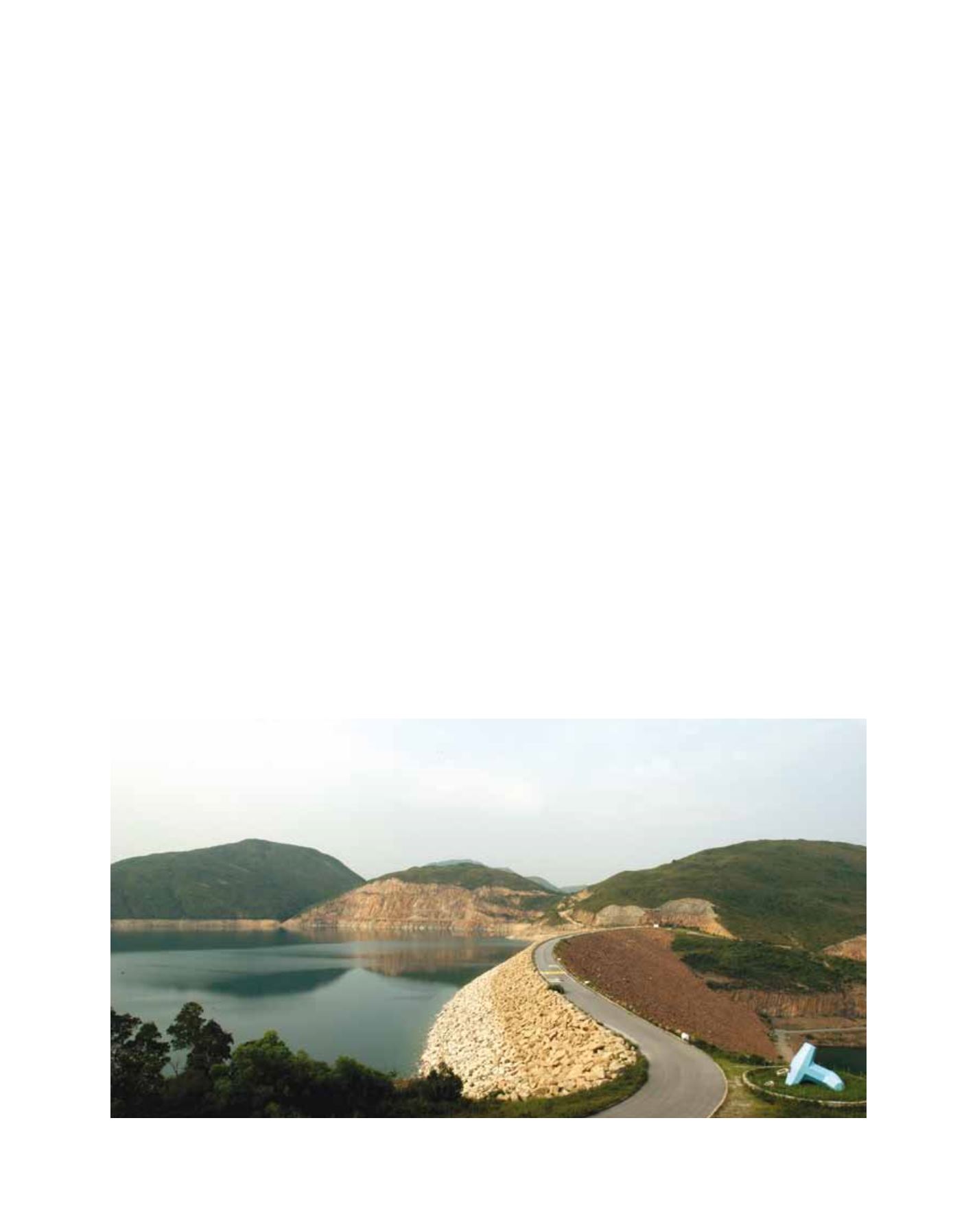

[
] 215
U
rban
I
ssues
• Providing information relating to the Code of Practice on Wind
Effects to ensure that local buildings were strong enough to
withstand hurricane force winds, a threat brought about by the
occasional passage of typhoons
• Estimating probable maximum precipitation for the design
of drains with sufficient capacity to prevent flooding (Hong
Kong’s annual rainfall of some 2,300 millimetres is normally
concentrated in the May-September period)
• Anticipating maximum sea level, taking into account the tidal
cycle and storm surge brought by typhoons for incorporation
in the Port Work Design Manual for designing port,
reclamation and coastal engineering facilities to protect the city
from sea flooding.
Climate services in recent years
With the advancement of society, demand for climate services
has extended from supporting the building of infrastructure
to the improvement of people’s health and quality of life.
Advances in information technology and numerical climate
prediction also provide the opportunity to enhance the accuracy
and variety of climate forecast products ranging from weeks
to months, to seasons, and to the year ahead. The concern
about global climate change spawns a growing demand for
projecting future climate conditions to support mitigation and
adaptation decision-making, policy and development planning.
Thus, HKO’s climate services have acquired new dimensions in
recent years. Through a series of collaborations and outreach
activities, HKO has successfully built close partnership with a
diversity of stakeholders to enhance climate services and the
use of climate information in Hong Kong. These projects and
activities cover various areas including public health, water
resources, urban planning, flower cultivation and public educa-
tion on climate change.
Image: HKO
Climate and public health
It is well known that climate conditions can impact
public health. In collaboration with other government
departments, tertiary institutions and social enterprises,
HKO has been studying the impact of climate on public
health in Hong Kong with particular focus on thermal
stress and the occurrence of infectious and vector-borne
diseases.
Influenza epidemics
Influenza is a common seasonal communicable disease
in the city. HKO collaborated with microbiologists
from the Chinese University of Hong Kong to study
the seasonal variations of influenza occurrence, using
the laboratory-confirmed influenza cases admitted to a
local hospital and the meteorological data recorded in a
nearby weather station. The study identified the favour-
able climatic conditions for the occurrence of seasonal
peaks of influenza in Hong Kong and provided useful
information on the timing and duration of the applica-
tion of vaccinations for protecting the public.
1
Ovitrap index
To study the effect of weather on the abundance of
Aedes mosquitoes (a common mosquitoes which can
transmit dengue fever) in the city, HKO worked with
the Department of Food and Environmental Hygiene
(DFEH) to set up ovitraps at an experimental site undis-
turbed by human intervention and to record an ovitrap
index (the percentage of ovitraps set up at site with
breeding of Aedes mosquitoes) for about two years. By
analysing the ovitrap records and the meteorological
data from a nearby weather station, a model was devel-
The High Island Reservoir was opened in 1978, helping to alleviate water shortage problems in Hong Kong
















